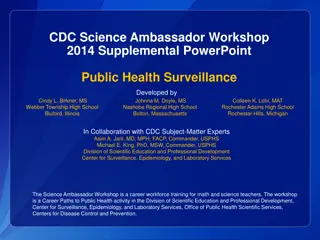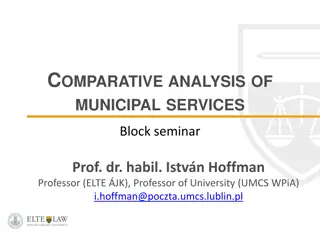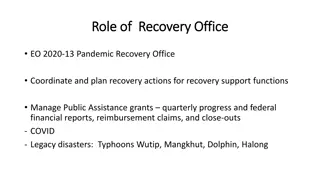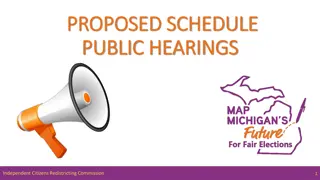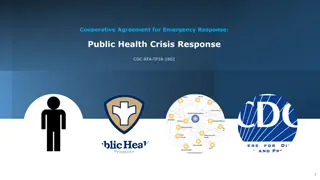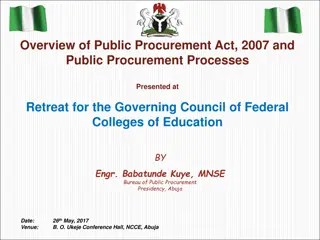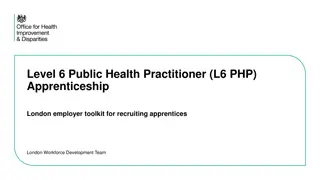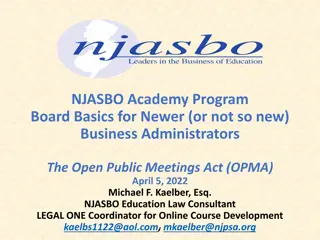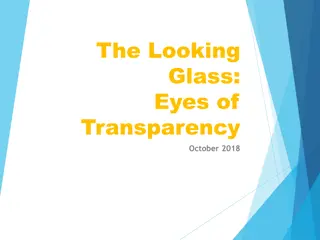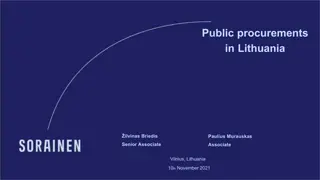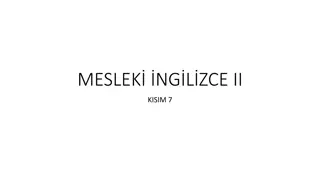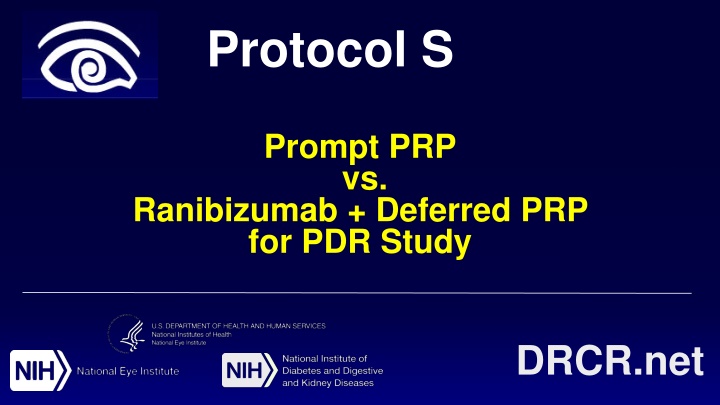
Comparison of PRP vs Ranibizumab in PDR Study
A randomized multi-center clinical trial conducted by DRCR.net comparing the efficacy and safety of Panretinal Photocoagulation (PRP) with intravitreous Ranibizumab in treating Proliferative Diabetic Retinopathy (PDR). The study focused on primary and secondary outcomes over 5 years, showing Ranibizumab to be non-inferior to PRP with additional benefits like decreased vitrectomies and DME development. The follow-up schedule and visit completion rates were also outlined.
Download Presentation

Please find below an Image/Link to download the presentation.
The content on the website is provided AS IS for your information and personal use only. It may not be sold, licensed, or shared on other websites without obtaining consent from the author. If you encounter any issues during the download, it is possible that the publisher has removed the file from their server.
You are allowed to download the files provided on this website for personal or commercial use, subject to the condition that they are used lawfully. All files are the property of their respective owners.
The content on the website is provided AS IS for your information and personal use only. It may not be sold, licensed, or shared on other websites without obtaining consent from the author.
E N D
Presentation Transcript
Protocol S Prompt PRP vs. Ranibizumab + Deferred PRP for PDR Study DRCR.net
Background DRCR.net Protocol S (PRP vs. Ranibizumab for PDR) Primary outcome: mean change in VA from baseline to 2-years with ranibizumab no worse than (non-inferior to) PRP Secondary outcomes: Ranibizumab: superior mean VA over course of 2 years (AUC) superior mean visual field outcomes at 2 years (although not necessarily perceived by study participant per NEI VFQ-25 questionnaire) 3-fold decrease in occurrence of vitrectomies decreased development of central-involved DME with vision impairment over 2 years among eyes without this at baseline PRP rarely given for failure or futility of ranibizumab to control PDR more visits and injections only cost effective (within range frequently cited as cost-effective in the United States) when DME present and causing vision impairment
Study Design Randomized, multi-center clinical trial (55 Sites) Participants meeting all of the following criteria: Age 18 years with Type 1 or type 2 diabetes Study eye(s) meeting all of the following criteria (a participant can have 2 study eyes): PDR No history of PRP Best corrected visual acuity letter score 24 (~Snellen equivalent 20/320 or better) Eyes with or without central-involved DME were eligible Primary Objective: Compare the efficacy and safety of PRP with that of intravitreous ranibizumab (0.5-mg in 0.05 mL) for proliferative diabetic retinopathy (PDR) 4
Follow-up Schedule PRP group: Visits every 16 weeks* Ranibizumab group: Visits every 4 weeks to assess for PDR treatment Both groups simultaneously evaluated for DME treatment Baseline to 1 Year PRP group: Visits every 16 weeks* Ranibizumab group: Visits every 4wk to 16wk to assess for PDR treatment Interval is extended if injections for PDR and DME deferred ( Defer and Extend ) 1 Year to 5 Years *Eyes with DME could be seen more frequently for DME treatment as needed. 5
Visit Completion 394 Eyes Randomized (305 Participants) Ranibizumab Group N = 191 PRP Group N = 203 Baseline 2-Years 88% 86% Excluding Deaths 5-Years 69% 65% Excluding Deaths 5-Years Overall 61% 61% 6
Ocular Baseline Characteristics at Enrollment Ranibizumab Group (N = 191) 75 (20/32) 262 66% 19% 15% 22% Required ranibizumab at baseline PRP Group (N = 203) 75 (20/32) 249 67% 26% 7% 23% Randomization VA letter score, mean ~Snellen Equivalent, mean Randomization OCT CST*, mean < 250 m, % 250 to 349 m, % 350 m, % Presence of CI-DME with VA loss**, % *Stratus equivalent; 2 eyes in each group were excluded because OCT CST measurements were missing. **Eyes with visual acuity letter score 78 (20/32 or worse) ANDOCT CST machine and gender specific thresholds
Ocular Baseline Characteristics at Enrollment Ranibizumab Group (N = 191) PRP Group (N = 203) All Eyes Had PDR Per Investigator Determination Prior to Randomization DR Severity Confirmation by Reading Center* NPDR Mild to moderate PDR High risk PDR to advanced PDR 10% 52% 38% 13% 49% 37% *Diabetic retinopathy level data were missing for 2 in the ranibizumab group and 4 in the PRP group.
Ocular Baseline Characteristics by 5-Year Completion Status Did Not Complete Completed Ranibizumab Group (N = 74) PRP Group (N = 80) Ranibizumab Group (N = 117) PRP Group (N = 123) Baseline Characteristics VA Letter Score, Median (25th, 75th percentile) ~ Snellen Equivalent, Median OCT CSF*, Median (25th, 75th percentile) 75 74 79 80 (67, 81) (65, 81) (75, 85) (72, 85) 20/32 20/32 20/25 20/25 227 234 220 229 (197, 295) (197, 268) (196, 260) (203, 263) *Stratus equivalent; 1 eye in each group was excluded because OCT CST measurements were missing.
Ocular Baseline Characteristics by 5-Year Completion Status Did Not Complete Completed Ranibizumab Group (N = 74) PRP Group (N = 80) Ranibizumab Group (N = 117) PRP Group (N = 123) All Eyes Had PDR Per Investigator Determination Prior to Randomization DR Severity (ETDRS) Confirmation by Reading Center, % 4% 11% 14% 14% Severe NPDR or less ( level 53) Mild to moderate PDR (level 61 or 65) High risk PDR (level 71 or 75) 49% 51% 54% 48% 46% 38% 31% 36% 1% 0 2% <1% Advanced PDR (level 81 or 85) * Diabetic retinopathy level data were missing for 2 non-completers in the Ranibizumab group, and 4 completers in the PRP group.
Results 13
Treatment 14
Mean Number of Injections 5-Year Completers Only Ranibizumab Group (N = 117) PRP Group (N = 123) Year 1 7.1 2.3 Year 2 3.3 1.1 Year 3 3.0 0.9 Year 4 2.9 0.6 Year 5 2.9 0.4 Cumulative Through 5 Years 19.2 5.4
Number of Intravitreous Injections by Year Ranibizumab Group, 5-Year Completers Only 50 None 1 - 3 4 - 6 7 - 9 10 45 45 40 37 40 35 35 32 35 30 Percentage 28 27 27 30 26 25 25 25 20 20 16 14 15 10 10 9 10 2 2 2 5 1 1 0 0 1 2 3 4 5 16 Year
Panretinal Photocoagulation at Follow-up Ranibizumab Group (N = 191) PRP Group (N = 203) Received PRP During Follow-up, N (%) 26 (14%) 103 (51%) Received PRP prior to 104 Weeks, N 13 92 Received PRP after 104 Weeks, N 15 31 Received PRP during Vitrectomy, N 18 29 Received PRP outside of Vitrectomy, N 10 89
Visual Acuity at 5-Years Ranibizumab (N = 117) PRP (N = 123) VA Letter Score and Approximate Snellen Equivalent Mean 80 81 ~Snellen Equivalent, Mean 20/25 20/25 Median (25th, 75th percentile) 84 84 (89, 78) 20/20 (20/16, 20/32) (89, 77) 20/20 (20/16, 20/32) ~Snellen Equivalent, Median
Mean Changes in VA From Baseline Over Time - Overall Cohort 15 Ranibizumab PRP 5-Year Adjusted Mean Difference: +0.6 letters 95% Confidence Interval: (-2.3, +3.5), P = .68 Mean Change in VA Letter Score 10 5 +3.1 +3.0 0 -5 0 16 32 52 68 84 104 120 Visit Week 136 156 172 188 208 224 240 260 N = 117 N = 191 N = 203 N = 123 Outlying values were truncated to 3 SD from the mean
Mean Changes in VA From Baseline Over Time for 5-Year Completers Only 15 Ranibizumab PRP 5-Year AUC Difference: +1.6 letters 95% Confidence Interval: (0, 3.2), P = .05 Mean Change in VA Letter Score 10 +3.3 5 +1.5 0 -5 0 52 104 156 208 260 Visit Week N = 117 of 191 N = 123 of 203 21 Outlying values were truncated to 3 SD from the mean
Change in VA Letter Score at 5-Years Adjusted Difference (95% CI) 1% (-12%, 15%) 6% (-10%, 21%) -3% (-11%, 5%) -1% (-7%, 5%) Ranibizumab (N = 117) PRP (N = 123) 15 letters improvement, % 26% 23% 10 letters improvement, % 52% 41% 10 letters worsening, % 6% 9% 15 letters worsening, % 6% 6%
VA at 5-Years Stratified by Baseline DME with Decreased VA Adjusted Difference (95% CI) P - Ranibizumab PRP Value With Vision-Impairing DME at Baseline Eyes, N Mean Change from Baseline Without Vision-Impairing DME at Baseline Eyes, N Mean Change from Baseline 20 24 -4.1 2.5 4.6 .48 (-20.6, 12.3) 96 98 0.03 3.2 2.4 .98 (-2.7, 2.7)
Mean Change in Cumulative Visual Field Total Point Score (30-2 + 60-4) - Overall Cohort 200 Mean Change in Cumulative Visual Field Ranibizumab PRP 0 Total Point Score (dB) -200 -330 -400 -527 -600 5-Year Adjusted Mean Difference: 208 dB 95% Confidence Interval (-9, 408), P = .04 -800 0 52 104 156 208 260 N = 41 N = 81 N = 86 Visit Week N = 38 24 Outlying values were truncated to 3 SD from the mean
Median Change in Cumulative Visual Field Total Point Score (30-2 + 60-4) - Overall Cohort 200 Median Change in Cumulative Visual Field Outlying values were truncated to 3 SD from the mean Ranibizumab PRP 0 Total Point Score (dB) -200 -244 -400 -480 -600 -800 0 52 104 156 208 260 N = 41 N = 81 N = 86 Visit Week N = 38 25
Mean Change in Cumulative Visual Field Point Score (30-2) - Overall Cohort 200 Mean Change in Cumulative Visual Field Ranibizumab PRP 0 -157 -200 Point Score (dB) -190 -400 -600 5-Year Adjusted Mean Difference: 29 dB 95% Confidence Interval (-91, 148), P = .64 -800 0 52 104 156 208 260 N = 44 N = 84 N = 88 Visit Week N = 41 26 Outlying values were truncated to 3 SD from the mean
Mean Change in Cumulative Visual Field Point Score (60-4) - Overall Cohort 200 Mean Change in Cumulative Visual Field Ranibizumab PRP 0 -199 -200 Point Score (dB) -348 -400 -600 5-Year Adjusted Mean Difference: 140 dB 95% Confidence Interval (16, 265), P = .03 -800 0 52 104 156 208 260 N = 43 N = 82 N = 87 Visit Week N = 41 27 Outlying values were truncated to 3 SD from the mean
Mean Change in Cumulative Visual Field Point Score for 5-Year Completers in Ranibizumab Group without PRP Treatment 200 Mean Change in Cumulative Visual Field -96 0 -119 -200 Point Score (dB) -201 -400 -600 -800 0 52 104 156 208 260 Visit Week HFA 60-4 (N=34) HFA 30-2 (N=35) HFA 30-2 + 60-4 (N=33) Outlying values were truncated to 3 SD from the mean
Median Change in Cumulative Visual Field Point Score for 5-Year Completers in Ranibizumab Group without PRP Treatment 200 Median Change in Cumulative Visual Field -87 0 -87 -87 -200 Point Score (dB) -400 -600 -800 0 52 104 156 208 260 Visit Week HFA 60-4 (N=34) HFA 30-2 (N=35) HFA 30-2 + 60-4 (N=33) Outlying values were truncated to 3 SD from the mean
Development of Vision- Impairing DME: Central Subfield Thickening with Visual Acuity ~20/32 or Worse 30
Development of Vision-Impairing DME Among Eyes Without Vision-Impairing DME at Baseline Hazard Ratio = 0.4 95% CI: 0.3 to 0.7 P < .001 Kaplan-Meier Estimates Years 2 3 4 5 Ranibizumab (N = 147) 11% 14% 17% 22% 38% Prompt PRP (N = 155) 29% 35% 35% 38% 22% 147 155 125 108 109 95 98 80 85 72 37 41 31
DR on Fundus Photographs at 5 Years* Ranibizumab (N = 90) PRP (N = 93) 43% 28% 29% 37% 33% 30% Without PDR ( level 60), % With Regressed NV (level 61A), % With Active NV ( level 61B), % Improved from PDR ( level 61) to NPDR ( level 53)**, % Without DR ( level 20)*, % 33% N/A 10% N/A Improved 2 steps in DR severity on fundus photos at 5 years**, % 46% N/A *Observed data only, only include eyes with active NV at baseline as graded by reading center. **Not applicable or cannot determine for PRP group.
DR Adverse Events: Over 5 Years Adjusted Difference (95% CI) -9% (-14%, -4%) -3% (-7%, 0%) -2% (-6%, 2%) 1% (-1%, 3%) 2% (-6%, 11%) -7% (-14%, -1%) Ranibizumab (N = 117) PRP (N = 123) Any Retinal detachment, % 6% 15% Retinal Detachment involving Center of the Macula, % 1% 4% Neovascular Glaucoma, % 3% 4% Neovascularization of the Iris, % 3% 1% Vitreous Hemorrhage, % 48% 46% Vitrectomy, % 11% 19%
Development of Retinal Detachment Hazard Ratio = 0.4 95% CI: 0.2 to 0.8 P = .004 18% 7% 191 203 167 175 148 152 134 132 121 17 53 59 36
Development of First Vitreous Hemorrhage after Baseline Difference = 4% 95% CI: -7% to 16% P = .47 58% 54% 191 203 150 147 112 110 89 91 69 73 29 37 37
Safety 40
Ocular Adverse Events Ranibizumab (N = 191) PRP (N = 203) P-Value Number of Injections 3132 981 Endophthalmitis, % <1% 0 Inflammation, % 2% 5% .05 Retinal Tear, % <1% 0 Cataract Surgery, % 16% 19% .62 Elevated IOP, % 16% 18% .58 Event defined as occurring at least once through 5 years.
Systemic Adverse Events P- 2 Study Eyes (N = 89) Ranibizumab (N = 102) PRP (N = 114) Value Nonfatal Myocardial Infarction Nonfatal Stroke Death due to potential vascular cause or unknown cause Any APTC Event* 3% 6% 4% .64 3% 6% 6% .65 7% 7% 2% .13 13% 18% 11% .31 Event defined as occurring at least once through 5 years. *Anti-platelet Trialists Collaboration Arterial Thromboembolic Events.
Time to First APTC Event* Kaplan-Meier Estimates Year 2 3 4 5 2-Study Eyes (N = 89) 9% 10% 13% 17% Ranibizumab (N = 102) 9% 13% 18% 21% Prompt PRP (N = 114) 8% 8% 8% 13% *Anti-platelet Trialists Collaboration Arterial Thromboembolic Events. 89 102 114 78 91 99 68 80 91 61 71 84 55 60 74 27 24 37 43
Systemic Adverse Events P- 2 Study Eyes (N = 89) Ranibizumab (N = 102) PRP (N = 114) Value Death from Any Cause 9% 13% 6% .24 Hospitalization 61% 65% 54% .24 SAE 63% 67% 55% .21 Hypertension 31% 37% 25% .13 Event defined as occurring at least once through 5 years.
Summary: 5-Year Results Visits, Injections, PRP Sessions 66% of participants (excluding death) completing 5-year visit (117 eyes in ranibizumab and 123 eyes in PRP group) Median number of visits* Ranibizumab = 43 PRP = 21 Mean number of injections Ranibizumab = 19 PRP = 5 Mean number of PRP sessions Ranibizumab = 0 PRP = 2 45 * Counting participants with one study eye only
Summary: 5-Year Results Central and Peripheral Vision Mean change in VA letter score Ranibizumab = 3.1 PRP = 3.0 10.5 letters Difference = 0.6 (95% CI: -2.3 to 3.5) Mean change in cumulative visual field total point score (HFA 30-2 + 60-4) Ranibizumab = -330 645 dB (N = 41) PRP = -527 635 dB (N = 38) Difference = 208 (95% CI: 9 to 408) 14.3 letters 46
Summary: 5-Year Results Complications Development of Vision-Impairing DME (~Snellen equivalent 20/32 or worse) Ranibizumab = 22% PRP = 38% Hazard Ratio = 0.4 (95% CI: 0.3 to 0.7) Underwent Vitrectomy Ranibizumab = 15% PRP = 22% Hazard Ratio = 0.5 (95% CI: 0.3 to 0.8) No statistically significant differences between groups in major SAE rates were identified. 47
Discussion VA in both treatment groups was good (mean ~20/25) and patient reported vision-related quality of life scores were similar between the groups over 5 years, even though more eyes in the PRP group developed vision-impairing DME. Overall, for participants completing the 5-year visit, few eyes in either group developed neovascular glaucoma or iris neovascularization and the rates were similar between groups. The overall rate of retinal detachment in the PRP group was higher (15% vs 6%). Most of these did not progress to involve the center of the macula and did not undergo vitrectomy, suggesting the detachments were not vision-threatening. 48
Discussion Few eyes in either group (6%) had substantial visual loss ( 15 letters from baseline). On average the PRP group on average had more peripheral visual field loss through 2 years than ranibizumab group; however, visual field loss, on average, progressed in both the PRP and ranibizumab groups from years 2 through 5 and the difference between groups diminished in this small sub-study. Further analysis of this finding seems warranted. Almost half of all eyes developed vitreous hemorrhage with 22% vs 41% needing vitrectomy in the ranibizumab and PRP groups respectively. The decision to perform vitrectomy was made by an unmasked investigator. 49
Discussion Despite the reduction in the mean number of injections for participants in the ranibizumab group, mean VA change from baseline remained fairly constant between 2 and 5 years. While there have been inconsistent reports of increased APTC events for patients receiving anti-VEGF, this full 5- year dataset does not show any definitive differences. No ocular safety concerns were identified. 50
Discussion Major Study Limitations Retention for this study was less than 65% for each group. No differences were identified between baseline factors and treatment groups for the completers vs non-completers. Eyes in the ranibizumab group that did not complete follow-up had more improvement in VA and OCT CST at their last measured follow-up visit. The outcomes for participants who did not complete the study are unknown. 51
Conclusion Loss to follow-up was relatively high. Visual acuity in most study eyes that completed follow-up was very good. Severe vision loss or serious PDR complications were uncommon in either group. Ranibizumab group had lower rates of developing vision-impairing DME and less visual field loss. There were no meaningful treatment group differences in patient-centered outcomes. These findings support either ranibizumab or PRP as viable treatments for PDR. Patient-specific factors, including anticipated visit compliance, number of visits, cost, and systemic health should be considered when choosing a treatment for PDR. 52




